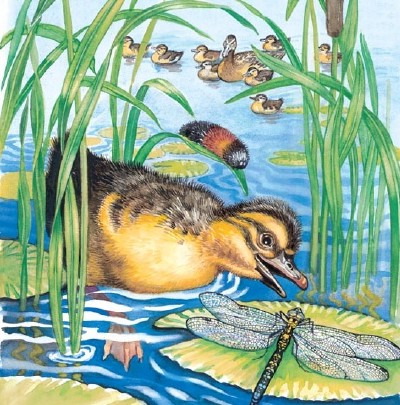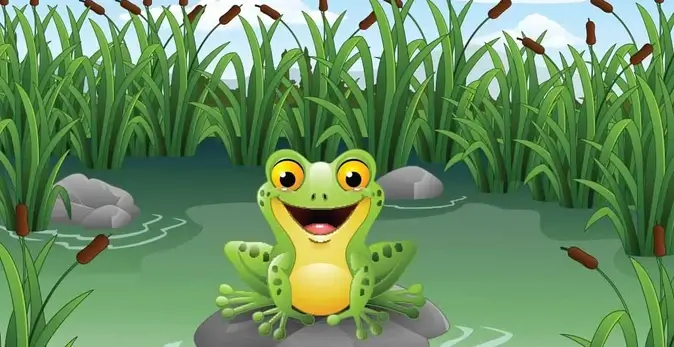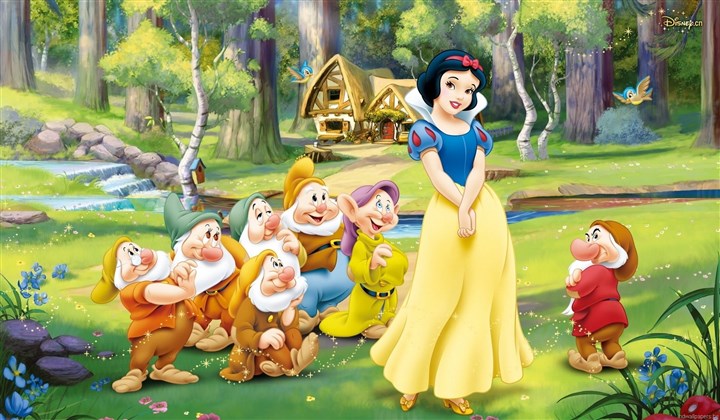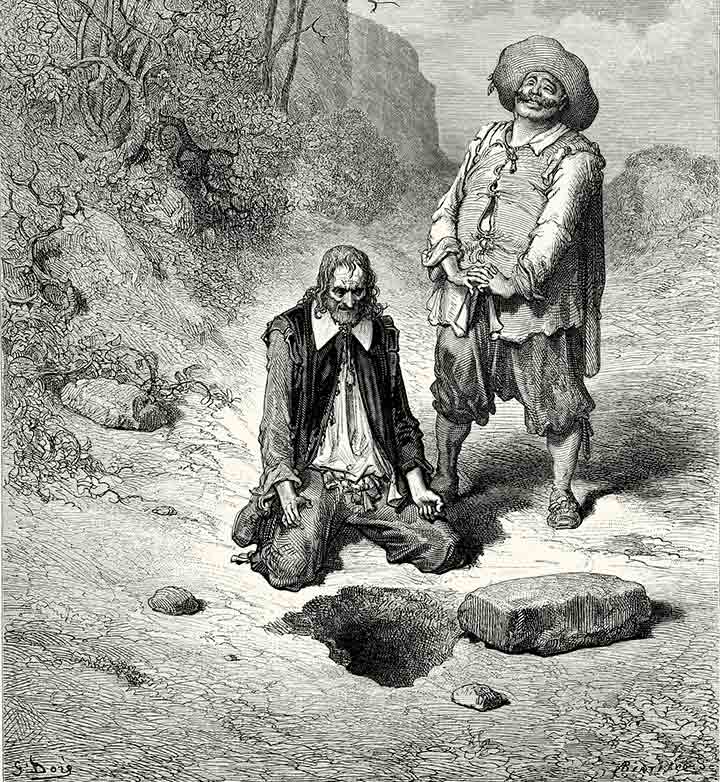 It is summer, and Mother Duck is making a nest. In a clump of reeds near the edge of the pond, Mother Duck finds a hollow place in the ground. She lines it with grass and soft cattail stems.
It is summer, and Mother Duck is making a nest. In a clump of reeds near the edge of the pond, Mother Duck finds a hollow place in the ground. She lines it with grass and soft cattail stems.
Mother Duck lays her nine smooth eggs. She plucks soft feathers from her breast to line the nest and protect the eggs.
Inside each egg is a tiny growing duck. It is attached to a bag of thick, yellow liquid called yolk. Yolk is special food for the growing duck.
Mother Duck sits on her eggs for many days and nights. Whenever she leaves the nest, she covers her eggs with a soft blanket of down to hide them and keep them warm.
At last Mother Duck hears the “pip-pip” of her ducklings working to get out of their shells. The last little duckling to break out of its shell is called Dabble. 
Baby ducklings peck their way out by using a special egg tooth. Located on the tip of the beak, this egg tooth will fall off later. Mother Duck protects her new ducklings by rubbing her tummy feathers over them in the nest. Now the ducklings are waterproof. They will stay warm and dry when they swim.
Mother Duck can waterproof her own feathers by combing oil into them with her bill. The oil that she uses comes from a place near her tail.
When ducks rub this oil over their feathers, it is called preening. The oil hardens and the feathers become waxy, allowing the water to roll right off.
While the ducklings are resting in their nest, a skunk comes to the water’s edge for a drink. Mother Duck and the ducklings try to stay really still and quiet so the skunk will not notice them.
 Mother Duck’s spotted brown feathers and the stripes on her ducklings blend in with the tall grasses and reeds.
Mother Duck’s spotted brown feathers and the stripes on her ducklings blend in with the tall grasses and reeds.
The ducklings will stay very close to their mother until they can fly. It usually takes about two months before they learn to fly.Dabble is a special type of duck known as a dabbler duck. She sees Mother Duck taking good care of her brothers and sisters. She knows that her mother will take good care of her, too.
The tiny ducklings are only a few hours old, but they can run. They follow their mother down to the water’s edge for their very first swim. Ducklings can usually swim right after they are born. But they must wait for their mother to waterproof their feathers before they can take their first swim. 
Dabble is the very first young duckling to jump into the water after Mother Duck. Her sisters and brothers gleefully jump in after her. They bob on the water like balls of fluff.
What a glorious and fun pond! Suddenly Dabble is dazzled by a dragonfly that lands on a nearby lily pad. A colorful butterfly grabs her attention next. Then she stares at a caterpillar on a cattail leaf.
Now Dabble is getting quite hungry, and she knows exactly what to do. She tips up her tail and stretches her bill down to the muddy bottom of the pond to find plenty of plants, roots, and seeds.
Dabble enjoys dipping down to look for food underwater, then popping up again to see where Mother Duck is.
 Dabbling is what Dabble does when she turns upside down to look for food underwater. Only her tail can be seen above the water.
Dabbling is what Dabble does when she turns upside down to look for food underwater. Only her tail can be seen above the water.
There is plenty of food now, but in the winter ducks can’t find insects, seeds, or plants to eat. So every fall, they fly south in a V formation. The weather is warm there, and they will find plenty of food.
Dabble watches a colorful butterfly flitting among the reeds in the pond. Then Dabble dips down to enjoy another nibble. She lifts her tiny head to quack hello to a red-winged blackbird.Mother Duck dips down to get something to eat for herself. Underwater, Mother Duck sees a big snapping turtle swimming toward her little ducklings.
Just as quick as a quack, Mother Duck calls out for her ducklings to return to shore, but Dabble is underwater and doesn’t hear her.
Mother Duck swims swiftly over to Dabble and gets between Dabble and the snapping turtle. Dabble pops up and swims to shore with Mother Duck, and the turtle swims away.
A duck’s three front toes are webbed and used as paddles to swim really fast through the water and away from snapping turtles. Mother Duck will do anything to protect her ducklings. Sometimes she will even flap her wings and quack loudly to scare an enemy away. That night all the ducklings sleep warm and safe in the nest after their busy first day in the world. Dabble is dreaming of tomorrow, when she will see the bright butterfly again.






